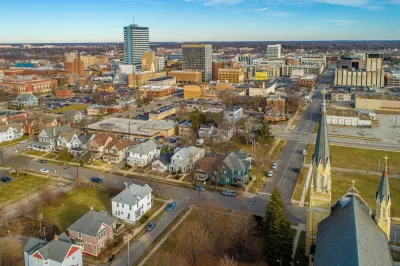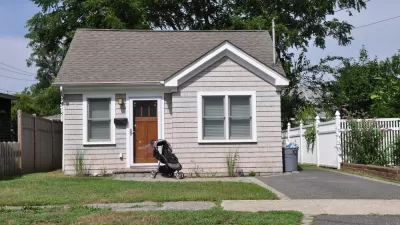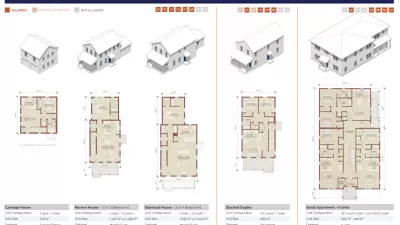The city hopes the templates, along with other incentive programs, will spur more housing construction on its vacant lots while maintaining neighborhood character and streamlining the development process.

A program that offers pre-approved development templates to South Bend developers provides a positive model for how cities can streamline the development process and encourage small developers to build more housing, writes Daniel Herriges in Strong Towns.
The plans, developed with the help of incremental developers and design experts, are specifically crafted for South Bend’s existing neighborhoods, where they fit the current zoning rules, lot sizes and shapes, and market conditions, and nod to the city’s historic architectural vernacular.
City officials hope this will help fill the hundreds of vacant lots languishing in the city and lower construction and permitting costs for builders. “The city, in return, gets a predictable form of development that is aesthetically compatible and can be replicated at scale.”
By updating and simplifying its zoning code, providing Sears catalog-style templates for construction, and investing in programs like a $20,000 sewer hookup rebate that ease the cost burden of building new homes, the city of just over 100,000 offers a model for streamlining development and encouraging affordable, site-appropriate, housing construction in its neighborhoods.
While some critics may deride such “cookie-cutter” development, Herriges points out that the South Bend model shows that templates don’t have to be bland, universalized, or lacking in context. And, Herriges points out, “if you want to produce a lot of really attractive cookies in a short amount of time, a cookie cutter is a fantastic tool for the job.”
FULL STORY: Pre-Approved House Designs Jump-Start Infill Development in South Bend

Study: Maui’s Plan to Convert Vacation Rentals to Long-Term Housing Could Cause Nearly $1 Billion Economic Loss
The plan would reduce visitor accommodation by 25% resulting in 1,900 jobs lost.

Alabama: Trump Terminates Settlements for Black Communities Harmed By Raw Sewage
Trump deemed the landmark civil rights agreement “illegal DEI and environmental justice policy.”

Why Should We Subsidize Public Transportation?
Many public transit agencies face financial stress due to rising costs, declining fare revenue, and declining subsidies. Transit advocates must provide a strong business case for increasing public transit funding.

Paris Bike Boom Leads to Steep Drop in Air Pollution
The French city’s air quality has improved dramatically in the past 20 years, coinciding with a growth in cycling.

Why Housing Costs More to Build in California Than in Texas
Hard costs like labor and materials combined with ‘soft’ costs such as permitting make building in the San Francisco Bay Area almost three times as costly as in Texas cities.

San Diego County Sees a Rise in Urban Coyotes
San Diego County experiences a rise in urban coyotes, as sightings become prevalent throughout its urban neighbourhoods and surrounding areas.
Urban Design for Planners 1: Software Tools
This six-course series explores essential urban design concepts using open source software and equips planners with the tools they need to participate fully in the urban design process.
Planning for Universal Design
Learn the tools for implementing Universal Design in planning regulations.
Smith Gee Studio
Alamo Area Metropolitan Planning Organization
City of Santa Clarita
Institute for Housing and Urban Development Studies (IHS)
City of Grandview
Harvard GSD Executive Education
Toledo-Lucas County Plan Commissions
Salt Lake City
NYU Wagner Graduate School of Public Service





























